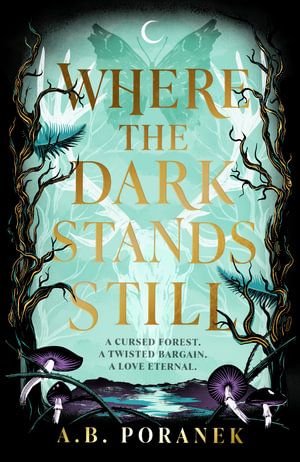Where the dark stands still by A.B. Poranek

Kupala village lies near the spirit wood, Driada. Liska Radost knows about the spirits who haunt it through family and village stories in nearby Stodola where she lives. Liska has always been able to see spirits but she also has magic which mostly she has used to heal animals but it has more recently led to tragic consequences. Liska’s mother is Stodola’s folk healer and she recognizes in her daughter a wild magic which is difficult to control. Liska is urged to live quietly to avoid being denounced by the villagers as a witch. Fear of spirits and demons is very strong where people live close to the Driada which is ruled by the demon Leszy. On the night of the solstice it is said the fern flower will bloom, legend says that if you pick the flower it will grant a wish. Liska plucks up her courage and enters the Driada, hoping to find the flower and wish away her magic power forever so she can live in peace like a normal person. Inside the Driada Liska is beset by spirits and loses her lantern, stumbling about in the dark until a glowing white stag appears. Rather than killing her it leads her into the wood as she follows its glowing footprints only to fall prey to a rusalka, a demon disguised as a beautiful woman, only her magic preserves her, coming unbidden to fight off the demon. She finally finds the fern flower but it is another trap, this time set by the Leszy, the warden of the wood, the white stag. She eventually agrees to serve him for a year after which he will grant her wish.
Gothic fairytales are always popular, allowing us to escape into magical realms and fantasy worlds especially in our complicated modern times. This one is beautifully told, uncovering folklore from the author’s Polish background. The exotic names, like the kikimora, rusalka, stryzgon, skratzky, each with its characteristic origin and power give an authentic feel to the tale and the protagonist’s resilience and courage, along with a wry sense of humour, finally help her find her place in the world.
Themes: Gothic fairytale, Relationships.
Sue Speck